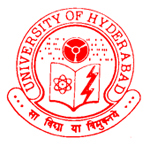Protein-carbohydrate interactions of pathogen-derived virulence factors and host target cells: unravelling the initial mechanisms of infectious diseases
Prof. Dr. Johannes Müthing
Numerous bacterial and viral adhesins as well as environmentally released toxins are known to target human and animal epithelial cells of the lung, the stomach and/or the intestine as well as endothelial cells of the blood vessels. Cell surface-exposed neutral glycosphingolipids (GSLs) and sialylated GSLs (gangliosides), which localize in lipid raft microdomains of the plasma membrane, represent potential receptor candidates for a considerable number of virulence factors of pathogenic microbes. Although carbohydrate-dependent interactions have been convincingly demonstrated for a couple of bacterial toxins and viral hemagglutinins, the specific receptors of mammalian target cells are largely unknown. Identification and structural characterization of the native GSL receptors are pivotal to gain primary knowledge on protein-carbohydrate interaction between pathogenic germs and host target cells, followed by proof of GSL localization in plasma membrane microdomains and studies on the functional impact of GSLs during the initiation of infection. Collectively, the study objects of the MCGS project will encompass adhesins and soluble toxins of gastric, intestinal und extraintestinal pathogens, namely Helicobacter pylori, enterohemorrhagic Escherichia coli (EHEC), Salmonella enterica and extraintestinal pathogenic Escherichia coli (ExPEC), as well as hemagglutinins from avian and human influenza A viruses.
Appropriate target cells of respective toxins and/or adhesins are human gastric, intestinal and lung epithelial cells as well as human endothelial cells. The strategy of this project for exploring the vital role of GSLs in initial host-pathogen interaction will further our understanding on the molecular and cellular mechanisms that underly the onset of infectious diseases and may help to develop antiadhesion therapeutics to emeliorate or prevent pathogen infections.
The analytical methods of choice to be employed in this project are the thin-layer chromatography (TLC) overlay assay using GSL-binding toxins/lectins and/or GSL-specific antibodies combined with ESI Q-Tof MS (electrospray ionization quadrupole time-of-flight mass spectrometry), which will be performed in tight cooperation with Dr. Mormann (Münster). Cell culture experiments are aimed at unravelling the involvement of GSLs in toxin- and adhesin-mediated cellular damage. In addition, target cells are the source for GSLs and will be thoroughly investigated in search of GSL receptors of microbial adhesins and toxins. Detergent-resistant membranes (DRMs) will be prepared from human and/or animal cells and can be used as equivalents of microdomains to explore the functional requirement of GSL assembly in lipid rafts. Quantitative real-time PCR allows for expression analysis of receptor-related glycosyl- and sialyltransferases and a newly established surface acoustic wave (SAW) biosensor is now applicable in our group for real-time biomolecular interaction analysis (collaboration with Dr. Mormann, Münster). In cooperation with our Indian partner Prof. Swamy (Hyderabad) studies on the thermodynamics of oligosaccharide binding will be conducted by isothermal titration calorimetry (ITC). Envisaged receptor identification of Helicobacter pylori adhesins and influenza virus hemagglutinins will be done in collaboration with Prof. Niyaz (Hyderabad) and Prof. Hensel (Münster). Last not least, reference neutral GSLs and gangliosides of human and animal origin as well as monoclonal and polyclonal carbohydrate-specific antibodies are available and novel neoglycolipids will be produced together with Dr. Ramu Sridhar (Hyderabad).
Tentative titles of PhD projects to be supervised by Prof. Müthing:
- Lipid raft association of glycosphingolipid receptors in membrane microdomains as a functional requirement for binding and internalization of bacterial virulence factors (with Sridhar and Mormann)
- Unravelling the binding specificity of viral hemagglutinins and Helicobacter pylori adhesins toward terminally sialylated CD75s- and iso-CD75s-gangliosides (with Swamy, Niyaz, Mormann and Hensel)
- Investigations on the interaction of glycosphingolipids with viral hemagglutinins and Helicobacter pylori adhesins by use of surface acoustic wave (SAW) and isothermal titration calorimetry (ITC) (with Mormann, Swamy, Sridhar, Niyaz and Hensel)
- Studies on the involvement of glycosphingolipids in toxin- and adhesin-mediated injury of human gastric and intestinal epithelial cells (with Niyaz and Hensel)
- Structural characterization of cellular glycosphingolipid receptors of fimbrial Salmonella, EHEC- and ExPEC adhesins and thermodynamics of oligosaccharide binding (with Swamy, Mormann and Hensel)
Last Update: 29.04.2013



